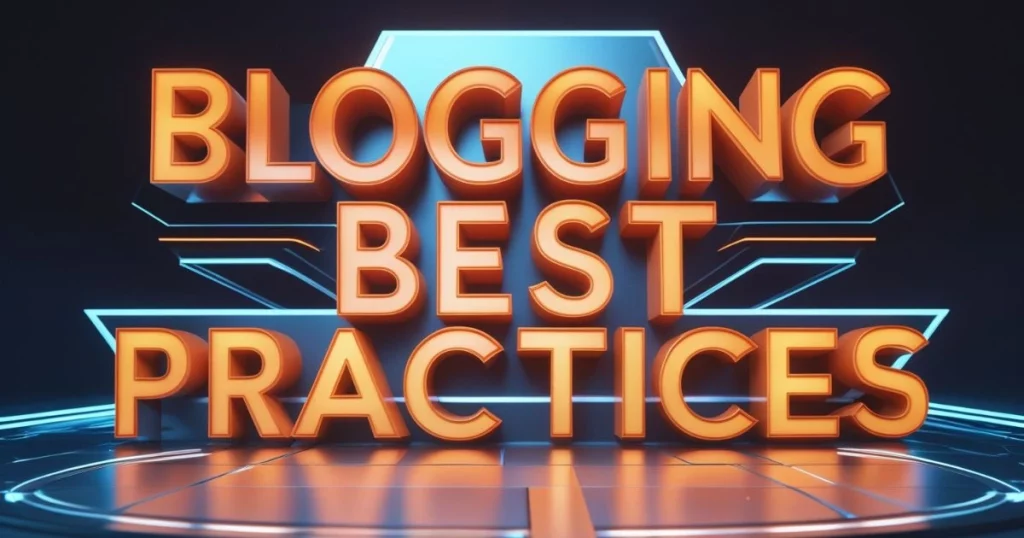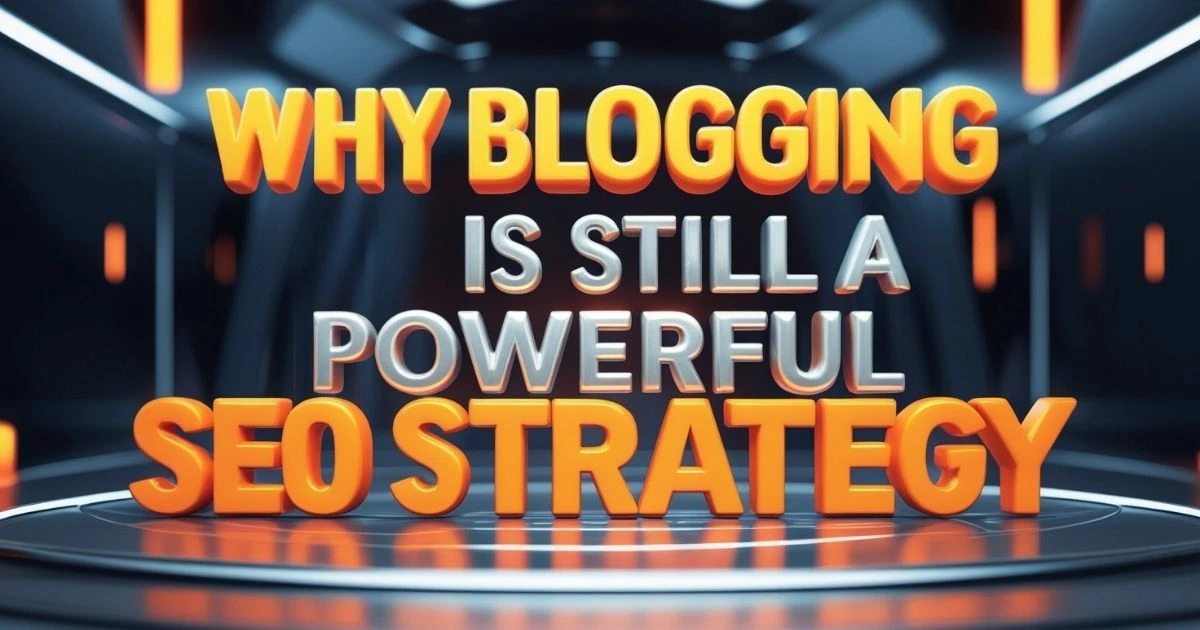In 2021, we worked with a small e-commerce startup that struggled to get traction online. Their website barely appeared on Google’s second page, and their organic traffic was non-existent. Instead of relying solely on paid ads, we convinced them to start a blog. We mapped out a content strategy, focusing on high-intent keywords and informative, engaging articles.
Fast forward to today, that same business dominates search rankings in their niche, driving thousands of organic visitors each month—all thanks to the compounding power of blogging.
Yet, every year, we hear the same question: “Is blogging dead?” With the rise of video content, AI-generated articles, and social media dominance, some marketers believe blogging has lost its relevance. The truth? Blogging isn’t just alive—it’s one of the most effective SEO strategies available. High-quality, optimised content continues to be a key ranking factor for Google. Blogs help capture long-tail keywords, build authority, and attract backlinks, making them indispensable for long-term SEO success.
If you’re not leveraging blogging for SEO, you’re leaving valuable traffic and conversions on the table. Let’s dive into why blogging remains a powerhouse and how to do it right.
Why Blogging is Still a Powerful SEO Strategy
Google thrives on fresh, relevant content, and blogging is one of the best ways to provide it. When you consistently publish high-quality articles, you give search engines new pages to index, increasing your chances of ranking for relevant queries.
1.1 Blogging Helps Target Long-Tail Keywords
Long-tail keywords—specific search phrases with lower competition—are crucial for attracting the right audience. Unlike broad, high-competition keywords, long-tail queries often reflect strong user intent. Blogging allows you to create content around these niche terms, helping your site rank for searches that bring in qualified traffic.
1.2 Blogs Attract Backlinks and Improve Domain Authority
Quality blog content naturally earns backlinks from other websites, which signals credibility to search engines. The more authoritative sites link to your content, the higher your domain authority becomes, improving your overall search rankings.
1.3 Enhances Internal Linking and Site Structure
Blogging also helps with internal linking, an often-overlooked SEO factor. Linking between your own blog posts and service pages improves site navigation, distributes link equity, and helps search engines understand your website’s structure.
1.4 Drives Organic Traffic and Builds Brand Trust
Consistently publishing valuable content helps establish your brand as an industry expert. Readers who find your blog posts helpful are more likely to trust your business, engage with your content, and convert into customers.
By leveraging blogging for SEO, you’re not just boosting rankings—you’re building long-term authority, attracting organic traffic, and enhancing user experience. Now, let’s explore how to create blog content that actually ranks.
Blogging vs Other Content Marketing Strategies

With so many content marketing options available—video, social media, email marketing—some businesses wonder if blogging is still worth the effort. While all these strategies play a role in digital marketing, blogging remains the foundation that ties everything together.
2.1 How Blogging Compares to Other Content Strategies
- Video Content: Videos are highly engaging and great for brand awareness, but they lack the long-term discoverability of blog posts. Unless optimised for YouTube SEO, videos tend to lose visibility over time, while well-written blog posts can rank for years.
- Social Media: Platforms like Instagram and TikTok offer fast engagement but have fleeting content lifespans. A tweet or LinkedIn post may generate buzz for a day or two, but a well-optimised blog post can consistently drive traffic for months or even years.
- Email Marketing: Email is excellent for nurturing leads, but it requires an audience first. Blogging attracts organic visitors, who can then be converted into email subscribers and long-term customers.
2.2 Blogging: The Foundation of Content Marketing
A well-executed blog strategy strengthens every other marketing channel. Blog content can be repurposed into video scripts, social media posts, and newsletter content, making it a versatile asset that fuels multiple touchpoints in your marketing funnel.
2.3 Case Study: How Blogging Drove Massive Growth
One of our clients struggled with lead generation despite a strong product. We implemented a blogging strategy focused on educational, keyword-optimised content. Within a year, their organic traffic increased by 350%, and blog-generated leads became their top conversion source.
This proves that blogging isn’t just relevant—it’s a growth engine when done right. Now, let’s dive into the best blogging practices to maximise your SEO success.
Blogging Best Practices for SEO Success

Creating blog content that ranks on Google requires more than just writing—it involves strategic keyword research, high-quality content creation, and proper on-page SEO. Here’s how to get it right.
3.1 Keyword Research & Topic Selection
Before writing a blog post, you need to know what your audience is searching for. This starts with keyword research.
- Find high-impact keywords: Use tools like Google Keyword Planner, Ahrefs, or SEMrush to identify keywords with a balance of search volume and low-to-medium competition.
- Focus on long-tail keywords: Instead of targeting broad, competitive terms like “digital marketing,” go for more specific queries like “how to create a content marketing strategy for small businesses.”
- Analyse search intent: Understanding why users search for a term helps craft relevant content. Are they looking for information, comparisons, or ready to make a purchase? Align your content accordingly.
A well-researched blog topic not only improves rankings but also ensures your content resonates with the right audience.
3.2 Writing High-Quality, Optimised Content
Once you have the right topic, structuring your content effectively is key.
- Use a logical structure: Break up content with headings (H1, H2, H3), bullet points, and short paragraphs to enhance readability.
- Avoid keyword stuffing: Naturally incorporate primary and secondary keywords throughout the content while maintaining a conversational flow.
- Engage with storytelling and data: Readers (and Google) love engaging, well-researched content. Use real-world examples, statistics, and storytelling to add credibility and keep users on the page longer.
Google prioritises user experience, so well-structured, engaging content is more likely to rank.
3.3 On-Page SEO Essentials
Optimising your blog’s technical elements ensures it’s easy for search engines to crawl and rank.
- Craft compelling meta titles & descriptions: These should include your main keyword while being engaging enough to encourage clicks.
- Optimise URLs: Keep them short, keyword-rich, and descriptive (e.g., /blogging-for-seo-success instead of /post123).
- Use internal linking strategically: Link to related blog posts and service pages to enhance site structure and keep visitors engaged.
- Incorporate multimedia: Images, infographics, and videos make content more engaging and improve dwell time—another factor that influences rankings.
By following these best practices, you’ll not only rank higher in search results but also provide real value to your audience. Up next, let’s explore how to promote and build links for your blog content.
How to Rank Blog Posts: Promotion & Link Building

Writing a great blog post is only half the battle—getting it in front of the right audience is just as important. Without promotion and link-building efforts, even the best content can get lost in the sea of online competition. Here’s how to ensure your blog posts rank and drive consistent traffic.
4.1 Sharing Blog Posts on Social Media for Engagement
While social media signals don’t directly impact SEO, they help increase brand visibility, drive traffic, and encourage engagement—all of which indirectly improve rankings.
- Share posts across multiple platforms: Publish your blog content on LinkedIn, Twitter, Facebook, and even niche-specific forums where your target audience engages.
- Repurpose blog content: Turn key points into engaging LinkedIn posts, Twitter threads, or even short-form video content for platforms like TikTok and Instagram Reels.
- Encourage social sharing: Add social sharing buttons to your blog and prompt readers to share valuable insights with their network.
The more engagement your blog post receives, the higher the chances of earning backlinks and improving search rankings.
4.2 Guest Blogging and Outreach for Backlinks
Backlinks—links from other websites to your blog—are a major ranking factor in SEO. One of the best ways to build high-quality backlinks is through guest blogging and outreach.
- Guest post on authoritative sites: Reach out to relevant websites in your niche and offer to write guest posts in exchange for a link back to your blog.
- Leverage broken link building: Find broken links on industry-related sites and suggest your blog post as a replacement.
- Build relationships with influencers and bloggers: Connect with industry leaders, engage with their content, and organically earn mentions and backlinks.
High-quality backlinks not only boost rankings but also establish your website as an authoritative source in your industry.
4.3 Using Email Marketing to Drive Traffic
Email marketing remains one of the most effective ways to promote blog content and drive repeat traffic.
- Send newsletters featuring new blog posts: A well-crafted email with a compelling subject line can bring consistent traffic to your latest articles.
- Segment your audience: Tailor blog recommendations based on subscriber interests, ensuring they receive content that resonates.
- Automate blog promotions: Set up automated sequences that share evergreen blog content with new subscribers over time.
By integrating blog promotion into your email strategy, you nurture an engaged audience that regularly returns to your website, increasing dwell time and improving SEO rankings.
Conclusion: Blogging is Your SEO Powerhouse

Blogging is far from dead—in fact, it remains one of the most powerful SEO strategies available. It provides fresh, indexable content that Google loves, helps you target valuable long-tail keywords, attracts backlinks, and strengthens your internal linking structure. Unlike social media posts or paid ads that have short lifespans, well-optimised blog content continues to drive organic traffic for months or even years.
If you’re not actively blogging as part of your content marketing strategy, you’re missing out on a huge opportunity to grow your brand, build authority, and generate leads. Whether you’re just starting or looking to refine your approach, the key is to focus on high-quality, optimised content that delivers real value to your audience.
Now it’s your turn—are you ready to leverage blogging to improve your SEO? Download our free Blog SEO Checklist to ensure your posts are fully optimised for search rankings. Or, if you want expert guidance on building a results-driven blogging strategy, book a free consultation with our SEO specialists today!
FAQs
What’s the ideal blog length for Thai keywords in 2025?
- 1,800–3,000 words for competitive, commercial search terms like “best condos in Bangkok.”
- 800–1,200 words for trending or informational topics like “2025 Thai visa updates.”
Local Tip: Blend Thai and English keywords naturally (e.g., “ทัวร์เกาะพีพีแบบ private” for “Phi Phi private tours”).
2025 Shift: Google now prioritizes comprehensive answers over sheer length—ensure your post fully resolves the query!
How often should my Thailand-based business blog?
Blogging frequency depends on your industry:
- Local Services (real estate, visa services): 2–4 times/month, as topics can be time-sensitive.
- E‑commerce: 1–2 times per week, covering product guides and curated “best of” lists.
- B2B: 1–2 times/month with in-depth industry reports.
Pro Tip: Repurpose blog content into Thai-language infographics for Pinterest or LINE to extend reach.
Which SEO tools work best for Thai keyword research?
Use a mix of free and paid tools:
- Free tools: Google Trends Thailand (track rising searches like “digital nomad visa 2025”), AnswerThePublic Thai version for long-tail questions.
- Paid tools: Ahrefs Thai Keyword Explorer (find low-competition local terms), SurferSEO (optimize according to Thai SERP features), Writesonic (AI drafts with Thai LSI keywords).
Cost Hack: Generate English content with ChatGPT then use human Thai translators to adapt and localize.
Can blogging help my business rank against Thai competitors?
- ✅ Target expat-focused keywords like “international schools Bangkok.”
- ✅ Obtain .th backlinks from local directories like Wongnai or forums like Pantip.
- ✅ Use local Schema markup (e.g. adding “Bangkok Branch” to your business name).
- ✅ Optimize for Thai voice search in natural Q&A format.
Case Study: A Phuket villa rental site ranked #1 for “monthly condo rentals Thailand” by publishing thorough location-specific guides.
How do I earn backlinks as a foreign business in Thailand?
- Guest post on Thai industry sites like The Thaiger or Bangkok Post.
- Create shareable resources (e.g., “2025 Thailand Tax Guide for Expats”).
- Sponsor local events to gain .edu.th links from university sites.
- Engage on Thai forums (Pantip, ThaiVisa) by posting helpful comments with links to your blog.
Red Flag: Avoid PBNs—Google penalizes them harshly in Thailand.
Should I use AI for Thai blog content?
- ✅ Use AI to research outlines and generate English-first drafts.
- ✅ Human-edit these to include Thai slang (e.g., “เจ๋งมาก” vs. “ดีมาก”), local examples, and place names.
Don’t: Publish raw AI translations or generic tourism content.
Tool stack: Use DeepL with a Thai editor (cost ~฿500–฿1,500 per post).
Should I start a Thailand SEO blog?
Yes—but: Blogging is powerful when combined with:
- ✔ A Thai/English keyword strategy targeting both tourists and locals.
- ✔ AI-assisted content creation with local editing.
- ✔ Ongoing local backlink outreach (e.g., directories, guest posts, forums).
- ✔ Monthly performance tracking to refine strategy.
Key Takeaway: In 2025, blogging remains essential for foreign businesses in Thailand—but only with hyper-local, AI-human content and strategic backlinks. Start small with 2 pillar posts/month and scale based on results.


